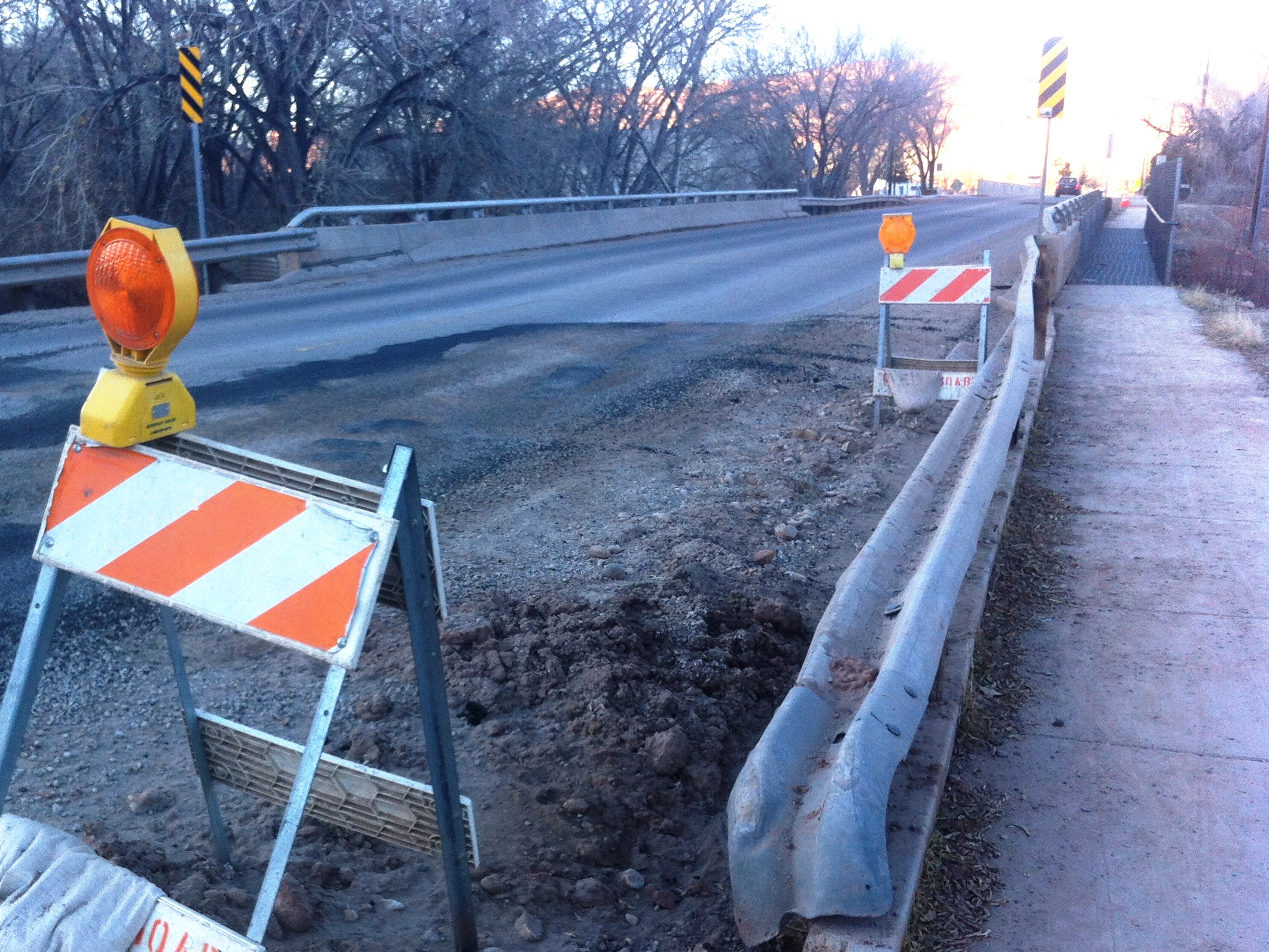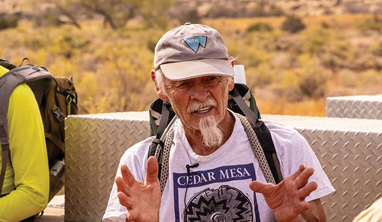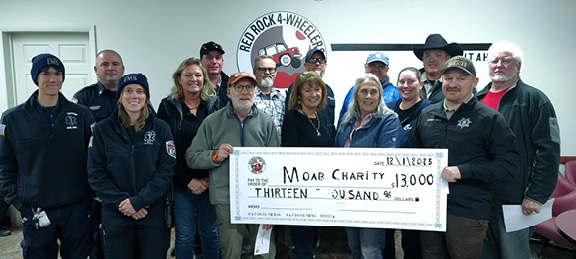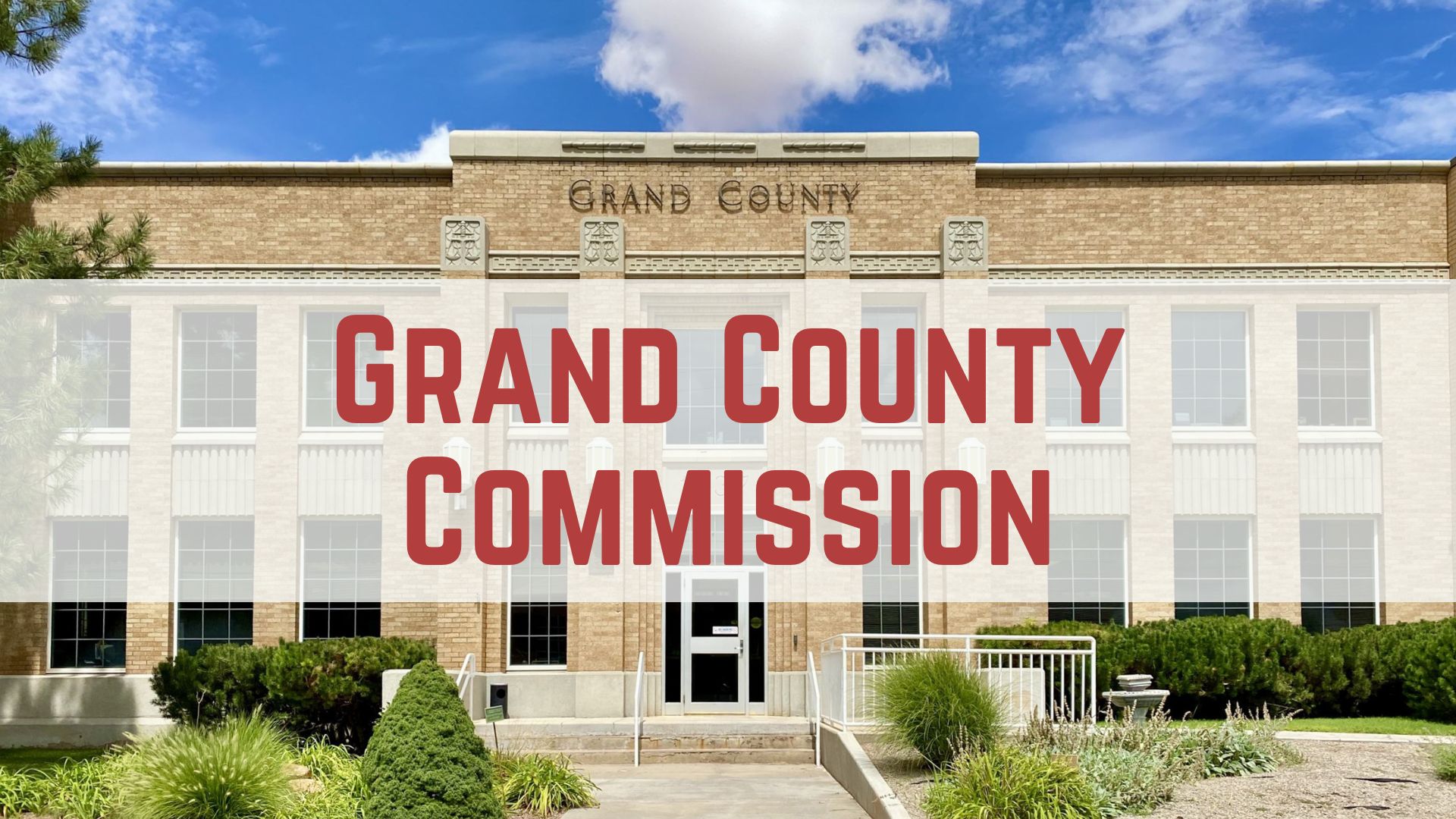Some information may be outdated.
Moab city engineer Rebecca Andrus has a lot of respect for the city’s early public works employees.
When Moab’s population bumped from 1300 to 10,000 people during the Uranium Boom of the 1950s and 1960s, the city’s public works department extended water mains and sewer lines, acquired water storage tanks and built a new sewage disposal plant.
Andrus said the forethought for the water and sewage system the mid-century workers installed was “impressive.”
But that was fifty to sixty years ago.
And the life expectancy of such systems is about 40 years, according to the American Waterworks Association.
Andrus is working closely with the city’s public works director Jeff Foster to analyze the city’s infrastructure in order to create a detailed asset management plan that would allow for the replacement of water and sewer lines over time.
“We’re looking at a total of 43 miles of waterlines,” Andrus said. “The total magnitude of it is significant. If we replaced every pipe in a 50 year time period – we would be replacing 4600 feet of pipe each year.”
That’s just short of one mile of pipe to replace each year.
That doesn’t include replacing 33 miles of aging sewer lines, or putting in storm drains. And in order to replace the water and sewer lines, roads will have to be dug up and replaced.
While the city staff and council acknowledged asset management as one of their top priorities this year at their annual visioning meeting Feb. 8, other than the need to finish the repair of lines that froze and broke this winter, there is no immediate threat to the infrastructure.
“There is no sign of significant failures right now. We have a good maintenance department,” Andrus said. “The system is functioning. The issue is we don’t want to get to a place of catastrophic failure. It is cheaper to replace a pipe than it is to have an emergency.”
Foster knows that lesson well.
“We had two failures in the 400 East waterline this year,” Foster said.
The main water line broke in two different places during the January coldsnap when temperatures dipped below zero and didn’t rise above freezing.
One of those breaks was at the bridge that goes over Pack Creek. A contractor was called to do a quick emergency repair. His bill: $20,000.
City crews are now trying to replace 400 feet of pipe at the location. The estimate to do a permanent fix is $100,000.
The road on 400 East used to dip down into the creek bed before the bridge was built, as did the original water main. When the bridge was built, the water main wasn’t realigned as it should have been, Foster said.
“We have to drill through the abutments of the bridge in order to get it back intact. That will take a little effort. We dug down 15 feet and didn’t even get close to it,” Foster said.
“It would have been better for them to have taken care of it at the time. Sometimes the things that are easiest aren’t the best.”
Andrus is now doing what she calls “culinary forensics” by researching city documents and pages of The Times-Independent to learn how and when pipes were laid over sixty years in order to assess which lines should take precedence in a long-term maintenance plan.
“A lot of the records aren’t very good,” she said.
She found a set of water plans that had no dates.
“But it did have the mayor’s name – J.W. Corbin,” Andrus said. “We’re trying to assess by that. It would be somewhere between 1954 and 1958.”
Andrus researched how other cities have replaced water and sewer systems over time. Each pipe and valve has to be assessed in order to set priorities and a timeline.
Foster said that replacing water, sewer and roads isn’t a project his crew would be able to do, as they are busy handling the city’s maintenance.
“We’d be contracting it out,” Foster said. “It wouldn’t be full-time year round, but it would be contracted each year. We would do so much pipe, get it done and then do the next section the next year as it is budgeted for.”
Foster is also looking at more than city utilities. Cable TV and phone lines also run underground.
“It depends on the approach we take,” Foster said. “We can make sure everyone is upgraded.”
Mayor Dave Sakrison focused on the finances of this type of project at the city’s visioning meeting.
“How are we going to pay for all the things we need to do with the limited resources we have?” Sakrison asked.
He referred to governmental lobbying and working with the state. He also said that the city may have to “think out of the box.”
“Kanab established a special service district for storm drainage and sewer,” Sakrison said. “It opened a new revenue source for them.”
He also pointed to the demands on the system by two million visitors a year.
Andrus had estimates for water usage between 2008 and 2012.
Moab residents use 32 million gallons a year. Commercial use is at 55 million gallons a year. Moab hotels alone, for indoor use only, use 8.9 million gallons a year.
Andrus said there may be ways to fund a larger project initially through water quality or community impact board loans.
“The issue is we’re going to have to repay those,” Andrus said. “There is some benefit to tackling a large project now in order to catch up. That’s what we’re trying to look at over the next year. What is the best way to tackle this?”
Appreciate the coverage? Help keep local news alive.
Chip in to support the Moab Sun News.





